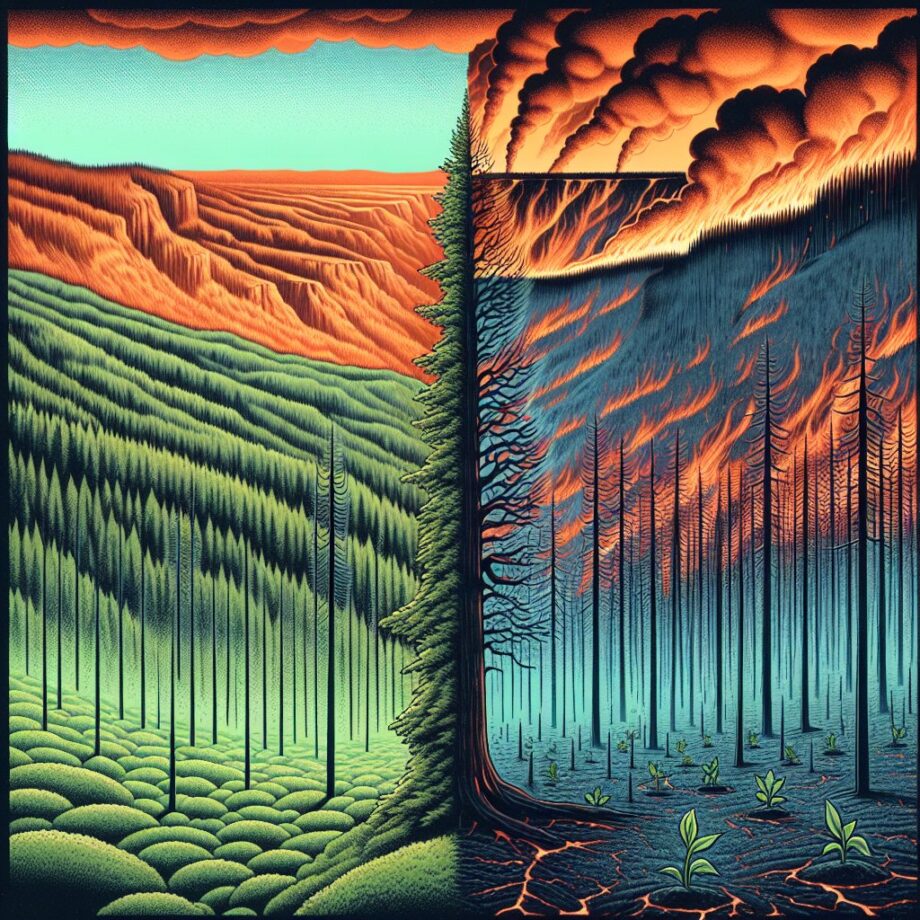
Introduction to the Changing Nature of Western Wildfires
The landscape of Western North America is being dramatically reshaped by increasingly intense and frequent wildfires, forcing scientists, firefighters, and land managers to reevaluate their understanding of fire dynamics. These modern megafires are not just larger and more destructive than their historical counterparts; they’re fundamentally changing how we think about fire behavior and its role in ecosystem management.
The Evolution of Fire Dynamics Understanding
Traditional fire behavior models, developed in the mid-20th century, are proving inadequate in predicting and understanding today’s extreme fire events. The complexity of modern wildfires has revealed several surprising aspects that are reshaping our knowledge:
- Fire-generated weather phenomena
- Unprecedented spread rates
- Novel burning patterns
- Extreme fire behavior in previously resistant ecosystems
Fire-Generated Weather Systems
One of the most striking discoveries in recent years is the ability of massive wildfires to create their own weather systems. These pyrocumulonimbus clouds, or “fire clouds,” can:
- Generate lightning strikes that ignite new fires
- Produce powerful updrafts that spread embers miles ahead
- Create unpredictable wind patterns that complicate firefighting efforts
- Inject smoke and particles into the stratosphere
Climate Change and Fire Behavior
The intersection of climate change and fire behavior has revealed complex feedback loops that weren’t previously understood. Scientists have identified several key factors:
Extended Fire Seasons
Climate change has dramatically lengthened fire seasons across the Western United States. Research indicates that:
- Fire seasons are now 78 days longer than in the 1970s
- Spring snowmelt occurs earlier, extending the dry season
- Autumn rains are arriving later
- Winter precipitation patterns have become more erratic
Vegetation Changes and Fuel Loading
Modern wildfires are revealing new patterns in how vegetation responds to and influences fire behavior:
- Drought-stressed plants are more susceptible to intense burning
- Dead vegetation accumulation creates unprecedented fuel loads
- Invasive species are altering natural fire regimes
- Forest density changes are affecting fire intensity
New Scientific Insights into Fire Behavior
Recent research has unveiled several groundbreaking discoveries about fire dynamics:
Ember Storm Phenomena
Scientists have gained new insights into how ember storms contribute to fire spread:
- Embers can travel up to 40 kilometers ahead of the main fire
- Urban areas are particularly vulnerable to ember attacks
- Certain vegetation types produce more dangerous embers
- Building design plays a crucial role in ember resistance
Fire Ecology Revelations
Modern wildfires are challenging traditional understanding of fire ecology:
- Some ecosystems are burning at frequencies exceeding historical patterns
- Post-fire recovery periods are becoming longer
- Novel ecosystems are emerging in burned areas
- Traditional fire-adapted species are struggling to cope
Technological Advances in Fire Science
New technologies are revolutionizing our ability to study and understand wildfire behavior:
Remote Sensing and Monitoring
Advanced monitoring systems are providing unprecedented data:
- Satellite imagery for real-time fire tracking
- LiDAR mapping of fuel loads
- Drone-based thermal imaging
- AI-powered fire prediction models
Management Implications
These new insights are transforming wildfire management strategies:
Prescribed Burning Evolution
Traditional prescribed burning practices are being updated based on new understanding:
- More precise timing based on weather patterns
- Modified burn intensities and patterns
- Integration of indigenous knowledge
- Consideration of smoke impacts on communities
Forest Management Adaptations
Forest management practices are evolving in response to new fire dynamics:
- Strategic fuel reduction programs
- Creation of fire-resistant landscapes
- Modified timber harvesting practices
- Enhanced urban-wildland interface protection
Community Impact and Response
The changing nature of wildfires is affecting communities in new ways:
Infrastructure Resilience
Communities are adapting their infrastructure:
- Fire-resistant building materials and designs
- Enhanced emergency response systems
- Improved evacuation routes and procedures
- Hardened utility systems
Future Implications and Research Directions
The evolving understanding of fire dynamics is shaping future research priorities:
Emerging Research Areas
Scientists are focusing on several key areas:
- Fire-atmosphere interactions
- Long-term ecosystem recovery patterns
- Climate change adaptation strategies
- Novel firefighting technologies
Conclusion
The unprecedented scale and behavior of Western wildfires have fundamentally reshaped our understanding of fire dynamics. This new knowledge is driving innovations in fire science, management practices, and community protection strategies. As climate change continues to influence fire behavior, ongoing research and adaptation will be crucial for developing effective responses to these evolving challenges.
Looking Forward
The future of wildfire management will require:
- Continued integration of new scientific discoveries
- Adaptive management strategies
- Enhanced community preparedness
- International collaboration and knowledge sharing
As we face an increasingly fire-prone future, the lessons learned from Western wildfires will be invaluable in developing more effective and resilient approaches to fire management worldwide.
